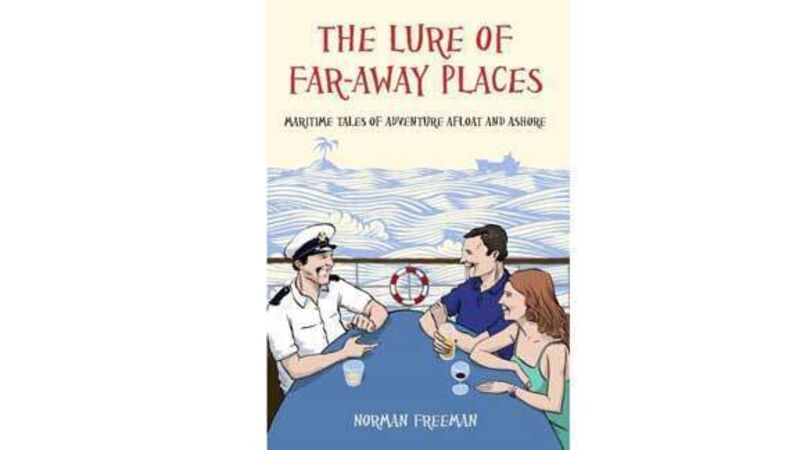Book review: The Lure of Faraway Places

It was published in 1840 and a film adaptation under the same name was released in 1946. Keeping the maritime tradition alive is Dublin author, Norman Freeman who spent eight years under the mast, as he was a marine radio officer for Marconi.
His latest publication, The Lure of Faraway Places, is a fascinating collection of maritime adventure.
This new release is a follow-up to his enormously readable Seaspray and Whiskey which is a most amusing story of a voyage on a fairly run down cargo ship with a mischievous crew, published in 1993.
While Norman Freeman was more than 20 years agrowing… before publishing his follow up, he was actually very busy in the interim period telling his yarns on RTÉ Radio’s Sunday Miscellany and Seascapes and writing a few newspaper articles.
So The Lure of Faraway Places is a collection of these stories of love and liaisons, risks and dangers, events that were funny, sad, memorable, and informative. All true life experiences of course.
There is one about an amorous captain who delighted in taking select lady passengers on deck to view the stars after midnight but I don’t think you would need to spend too long at sea on a cruise liner to come across his ilk. Was it the Concordia that came to a sorry end over such amorous distractions?
The lure of faraway places was the attraction for many young Irish lads of previous generations.
The present generation simply go on line and get a cheap flight to Bangkok, Sydney, Buenos Aires, or San Francisco.
The author’s reference to the old Irish poem ‘Thainig long as Valparaiso’ — a ship arrived from Valparaiso — evoked memories of my own schooldays and probably triggered by a life-long love of the sea.
The courage and composure of those at sea is tested at times of danger. The captain and crew have to act as resolutely and calmly as possible.
During wartime, captains endured great danger and stress being responsible for the ship and all on board.
Embarking on a particularly perilous voyage, the captain, who had a reputation of being a heavy drinker, was warned to go on the dry because of the risks of U-boat attack.
After a few days without a drink, the captain became cranky, nervous, and very jittery.
Lifeboat drills ended up in confusion and the crew became concerned about him being in charge in a real emergency.
When the ship headed clear of the reported danger area, the stress began to lift and the crew noticed a complete change in the captain — he was back on the brandy! But the ship was not quite clear of danger and in the middle of the night was struck by a torpedo.
The captain emerged from his cabin radiating calm. His soothing tones were heard over the PA. Lifeboats were launched and the captain was the last to leave, making his way with great dignity. The chief engineer confided in the author later “it’s a good job he was back on the drink the night we were torpedoed!”
Long voyages at sea during war time must have been a nerve wracking experience but the author has gleaned many fascinating stories of shipwreck and rescue. Thankfully, he lived to tell the tales.
I don’t want to spoil the reader’s enjoyment by revealing too many anecdotes but there are 59 tales to enjoy, so it is an ideal companion on a journey when you can squeeze in a yarn or two between stops.







